WORLD CLASS COACHING
Creating Chaos
By Matt Carroll
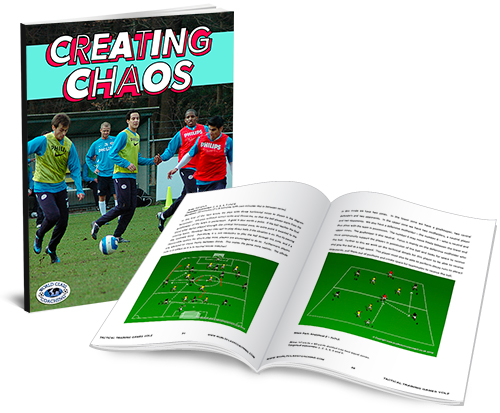
Table of Contents
PART TWO
Chaos to Recreate Shooting Scenarios
Chaos to Recreate Shooting Scenarios
No players will experience the exact same shot twice in their lives. The position the shot takes place may be the same, maybe even the goalie, but the weather, placement of the opposition, teammates, goalkeeper, what happened earlier that day, earlier in the game, etc. are constant variables. With all of these variables affecting the player, they then must execute their technique perfectly in order to just put the ball on frame. Teaching players to control their emotions and solely focus on their technique as the opposition attempts to create as much chaos around them as possible can create more consistent shooters, and hopefully more goals.
2 v 1 Striker Madness
Description:
The 2 v 1 Striker Madness game is meant to simulate as many situations a striker may see in the box, with pressure, as possible. The idea is that although it is a team game that implements passing, defending, and movement on and off the ball, the focus stays on the striker receiving and shooting a ball. The more players play, the more creative they will get in finding shooting chances amid the chaos.
Setup:
Have a pile of balls (the number of balls will determine the competitiveness and the length of the game) set up about ten yards out from the 18. Have your players get into, or assign, groups of three. Within those groups have the players designated as defenders (1s) wear yellow, your passers (2s) in red, and your strikers (3s) in black. Depending on age and ability assign 1-2 goalkeepers as well. Have the defenders and strikers arrange themselves inside the 18, with the passers lining up behind the pile of balls.
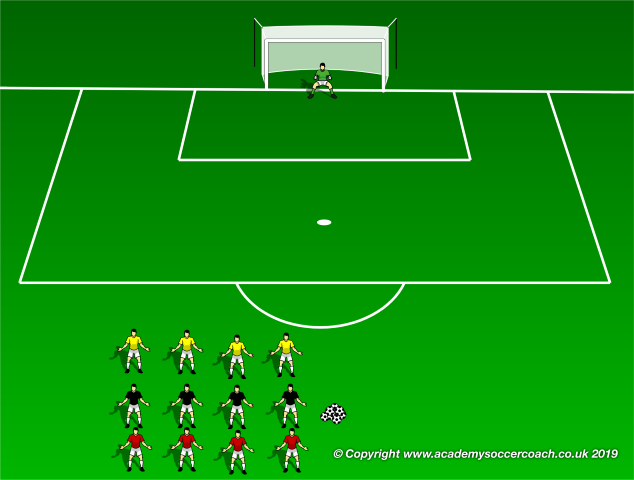
Execution:
The goal of the game is that within your team of three everyone has a role. The passer will collect balls from the pile (or from errant shots/passes/tackles) and feed passes to the striker that they are teammates with in the box.
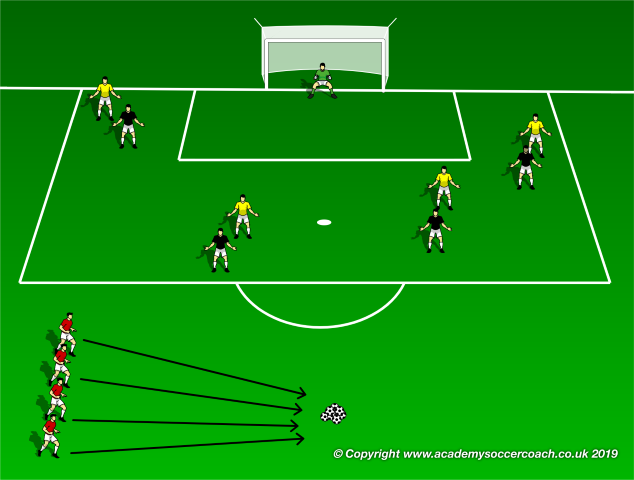
The passer only passes to the striker on his team. The passer can pass from anywhere, as long as he is outside the 18 (this includes from behind the net). It is the striker’s job then to receive passes from his teammate, the passer, and score goals. Every goal scored by the striker is a point for his team. The defenders job is then to ensure that none of the other strikers are able to score, and defend as many balls played in as possible.
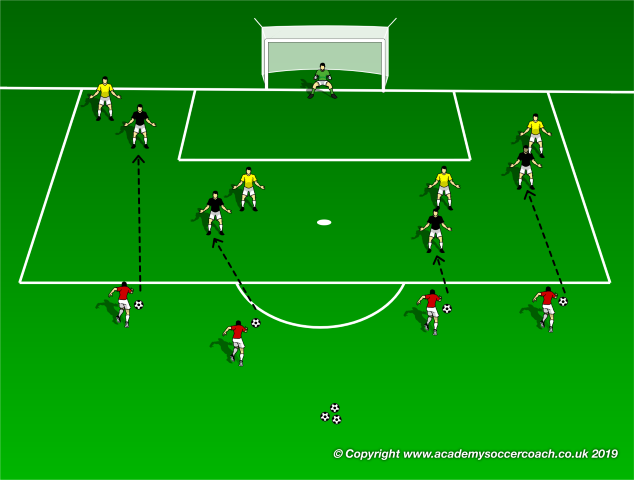
The game ends when either all of the balls have been scored, or a certain time limit has been reached. Once the game ends the 1 becomes the 2, the 2 the 3, and the 3 the 1, and the game begins again.
Variations:
Additional strikers/passers/defenders can be added to each team.
The number of balls and winning conditions can be changed to all balls are scored, a certain number of goals, or a time limit.
Goalkeeper numbers can vary, or be replaced by targets.
Touch restrictions can be made to the strikers.
Defenders can be assigned specific strikers to mark.
Killer Pass Transitions
Description:
The purpose of the “Killer Pass Transitions” activity is to create a high tempo simulation of play just beyond, or just in the box, in which players use short passing to break the defensive line and create an opportunity on net.
Setup:
One grid is established in the middle of the field. Grid size is determined by the number of players available. 3v3 grid should be around a 15x30. Depending on the age of the players the goals are placed 10-20 feet away from the long side of each grid. Players are divided into even teams (at least four), and placed on both ends of the short side of the grid (2 per side if there is four teams).
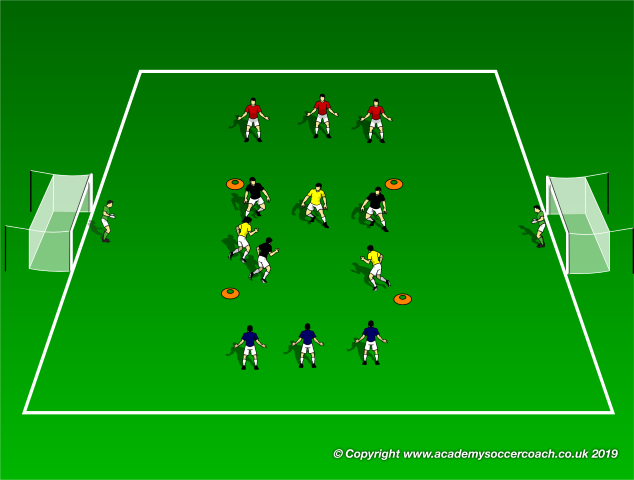
Execution:
Two teams start inside of the grid, a coach or the goalie then either rolls, passes, or throws a ball into the grid. The players must settle the ball and complete a set number of passes (normally 3) in order to leave the grid and take a shot on either goal. The final pass in the series can be a pass out of the grid, simulating a killer final pass towards goal.
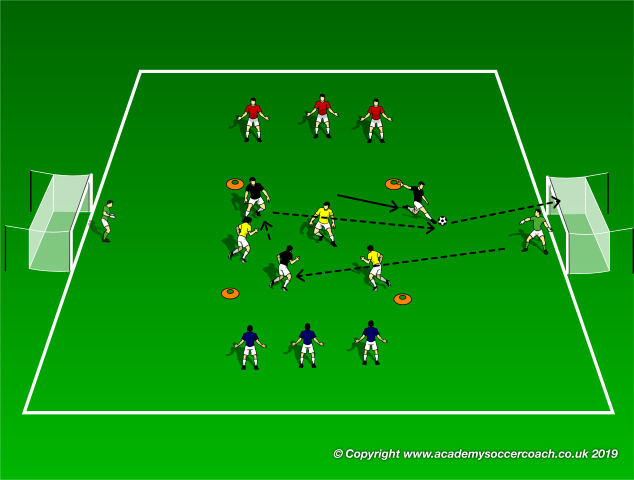
If the shot is saved, both teams re-enter the grid and the goalie plays the ball into the grid to be played. If the shot is a miss that goes behind the net that player's team is "off" and goes to the sideline to be replaced by a new team, and the coach restarts the activity by playing a ball in. If the goal is scored the scorer's team stays on and the team that was scored on is replaced.
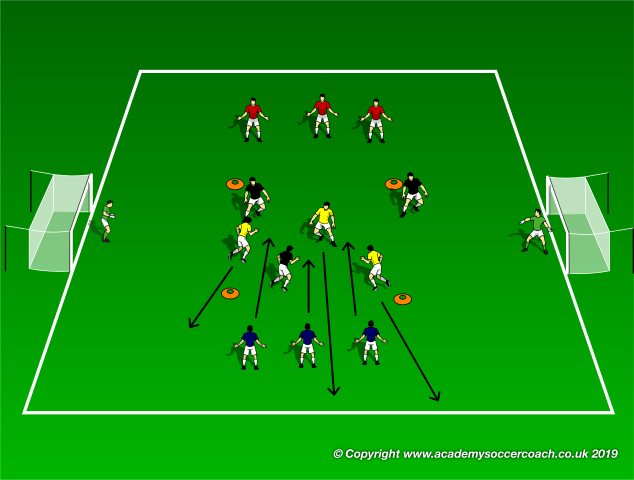
Game ends after a team scores a predetermined number of goals or the time limit is reached.
Variations:
A number of factors can be changed based on skill level, age, number of players, etc. including:
Grid Size
Goal Distance/Size
Number of Players in Grid
Time Limit/# of Goals
The side in which players can score can be altered as well.
POMO Chaos
Setup:
3 teams are arranged, two within the 18, one surrounding the perimeter. Balls are placed outside the half circle and a coach stands by them ready to reload if the ball goes too far out of play. There can be either one or two goalies in the net.
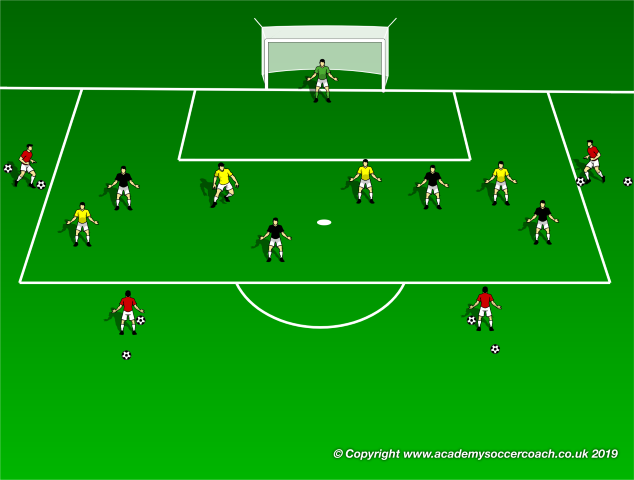
Execution:
The game starts with a cross from one of the players around the 18 into the box. The two teams in the 18 attempt to score for a minute.
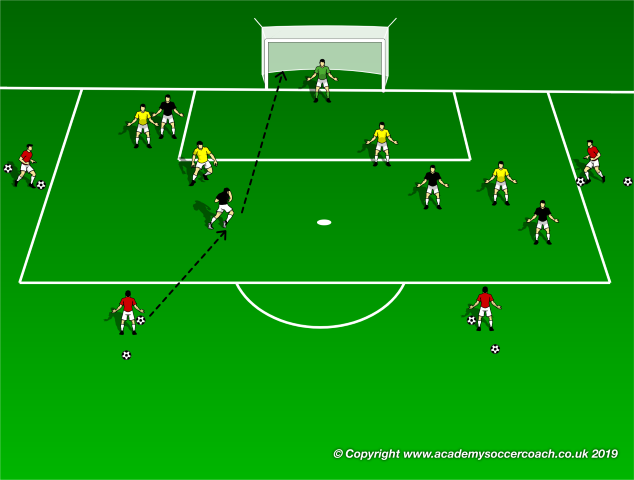
If one team scores they stay on, the losing team goes to the perimeter of the 18, and the team that was on the perimeter enters the box. During play if the ball is passed or deflects to any perimeter player, they must play a 1-2 touch cross directly into the penalty spot.
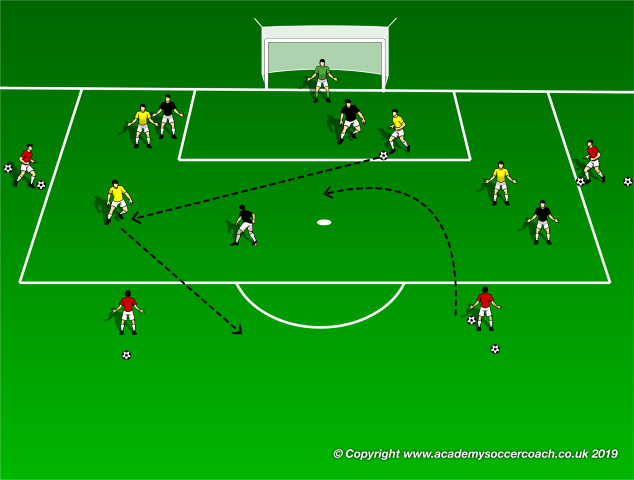
Variations:
Multiple balls can be added to create even greater intensity
Time of play can be shortened or increased based on level of intensity
Certain stipulations can be added such as touch restrictions, number of passes before a shot on goal, or the ball must be played to a perimeter player before a goal can be scored.


